Best software asset management tools
We feature the best software asset management tools, to make it easy reduce licensing costs by identifying the software licenses you own.


The best software asset management (SAM) tools make reducing licensing costs simple by identifying the software licenses your business owns. SAM software allows you to put into play assets you still have rights to use, while cutting out subscriptions you no longer need.
Additionally, by using SAM tools to track applicable expiry dates, you can better move workflows from one set of assets to another, by having clear deadlines that you can make full use of. This is especially important where a business or other organisation has an extensive IT inventory, where assets would otherwise be difficult to track.
SAM tools are also essential for IT teams who are under constant pressure to cut costs, and unused or unnecessary licenses are a good way to do this. However, it's not just software assets that can be tracked, but also hardware assets, and this can be essential when it comes to data security.
By ensuring you know where company laptops are and identifying any potentially missing ones, you can take remedial action if necessary to shut them down and even erase hard drives through remote commands.
SAM tools can also be used to transfer assets between departments, making overall control and management of software and hardware much simpler and more cost-effective overall.
Below, we've compiled our round-up of the best software asset management tools currently on the market.
The best software asset management tools available
1. ManageEngine AssetExplorer
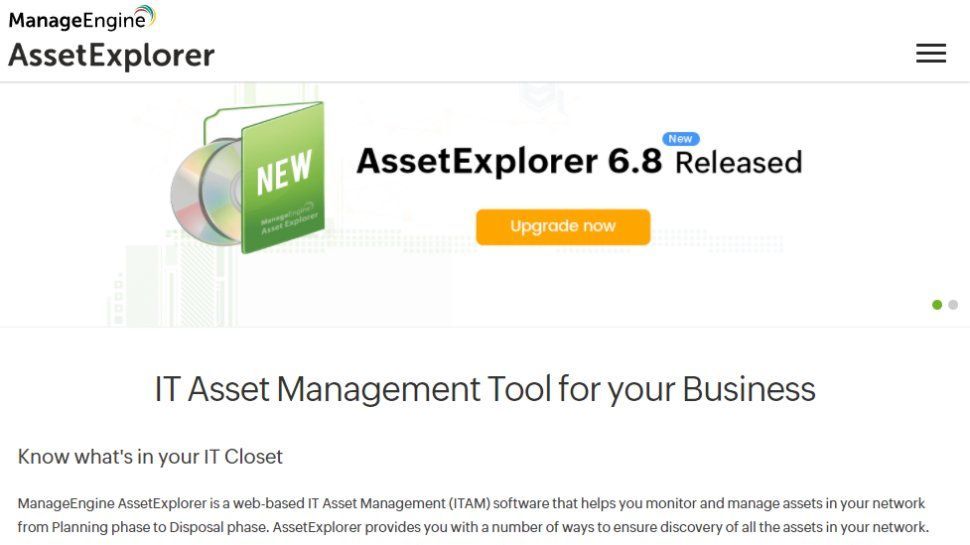
| Pros | Cons |
|---|---|
| Windows-style interface | No mobile app |
| Tracks networked and non-networked assets | Row 1 - Cell 1 |
Available as a fully-functioning trial for 30 days, MangeEngine’s AssetExplorer will make IT professionals who are used to working in Windows feel right at home. It offers excellent tools used for tracking and reporting alongside support for both physical and virtual assets, which can be added manually. Hosted in the cloud, AssetExplorer also offers VM-based asset support and relationship mapping, covering all the standard bases for IT professionals.
2. ServiceNow Asset Management

| Pros | Cons |
|---|---|
| Rich feature-set | Still relatively complex |
| Useful audit tracking | Row 1 - Cell 1 |
ServiceNow Asset Management is a cloud-hosted SAM that’s more suited to advanced users. In response to customer feedback, it’s been simplified in recent years and now sports an attractive UI that’s navigated using a left-hand sidebar. Still one of the more complex (yet fully-featured) offerings on our list, it lets admins use workflows to automate IT asset lifecycles and track financial, contractual, and inventory details of hardware and devices while recording maintenance activity. It also allows regular audits to be performed up until the point that hardware devices need to be retired.
3. SysAid
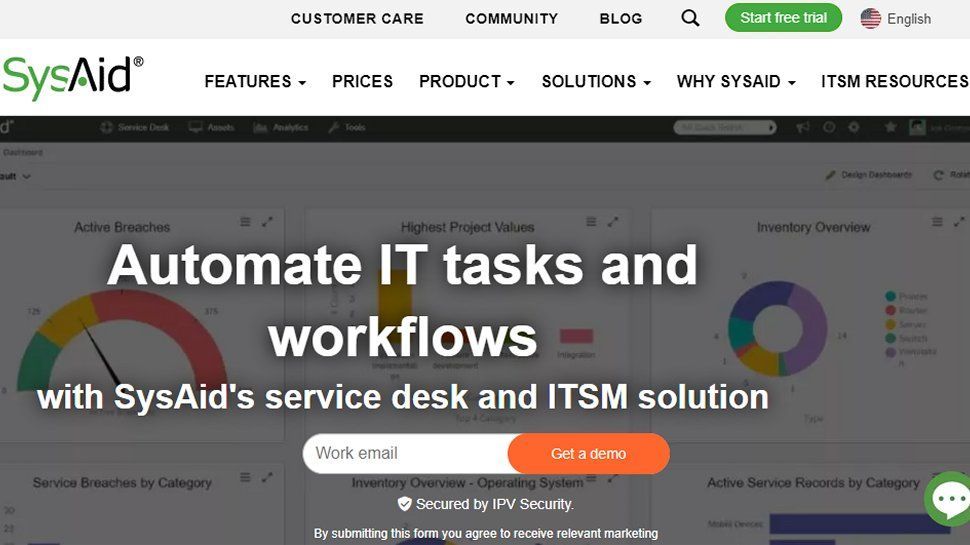
| Pros | Cons |
|---|---|
| Also acts as a helpdesk | Reporting functionality needs work |
| Easy-to-use | Row 1 - Cell 1 |
There are instances where it would be handy to have a helpdesk working alongside an IT asset management solution, and this is where SysAid comes in. It features a user-friendly interface that lets admins remotely track, control and track assets. Admins can easily view the assets in their new work and get a full picture of their hardware components and software products. For support, the organisation's end-users can press a designated hotkey to automatically take a screenshot and capture other relevant information about the asset to log in the event of an incident.
4. InvGate Assets
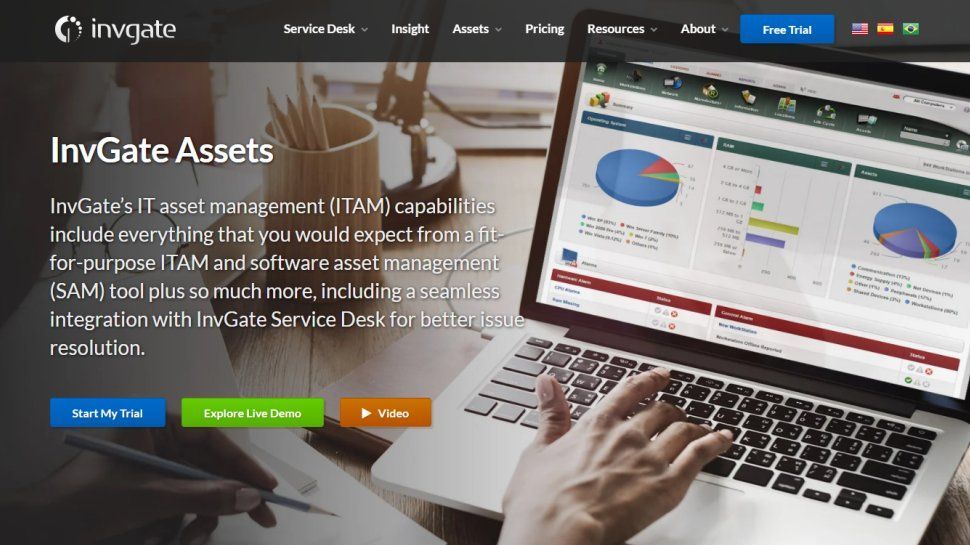
| Pros | Cons |
|---|---|
| Flexible and powerful | UI looks a bit dated |
| Easy to use front-end | Row 1 - Cell 1 |
InvGate Assets is a flexible SAM that lets you track your assets in a front-end view that’s accessible in a browser. It tracks your inventory and offers a list of features that include Change Management, Advanced Reports, License Management, Remote Desktop and Software Development. It has a nifty alerting system when licenses are about to expire, and you can also create alarms for tasks that are a priority – such as updated licenses or renewing IT equipment. If you want to take things a step further, data can be store in the back-end using a MySQL or Microsoft SQL Server database.
5. Solarwinds Web Help Desk
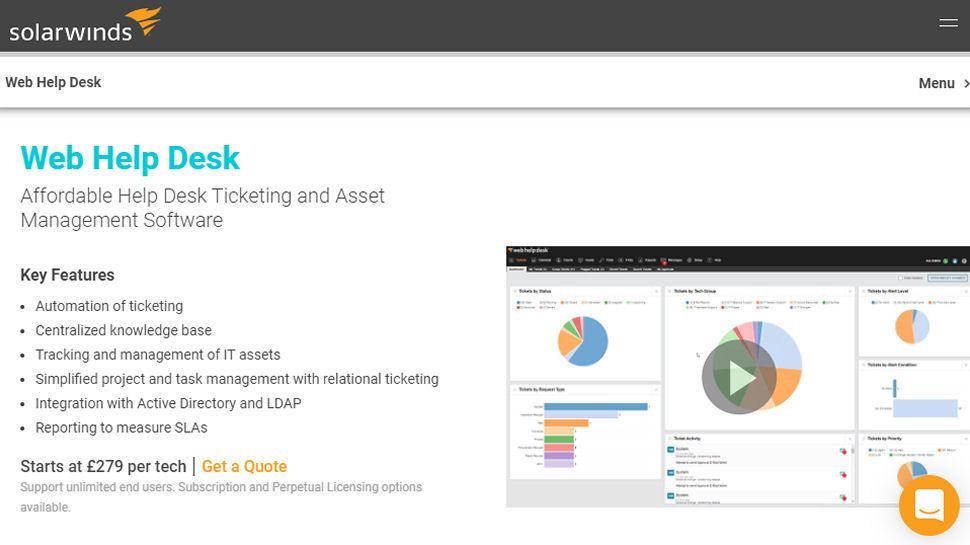
| Pros | Cons |
|---|---|
| Tracks hardware and software assets | Won’t track licenses |
| Variable pricing | Row 1 - Cell 1 |
Fast to set up (it took us just under 3.5 hours), SolarWinds Web Help Desk is an affordable option that can be deployed on-premises or in the cloud. A superb asset management took that helps you track your hardware and software assets (while keeping them up to date), it’s available on several different pricing tiers depending on how many assets you want to add. Just be warned that it won’t track licenses and software usage – but it will display the asset and ticket history for individual assets.
6. Freshservice
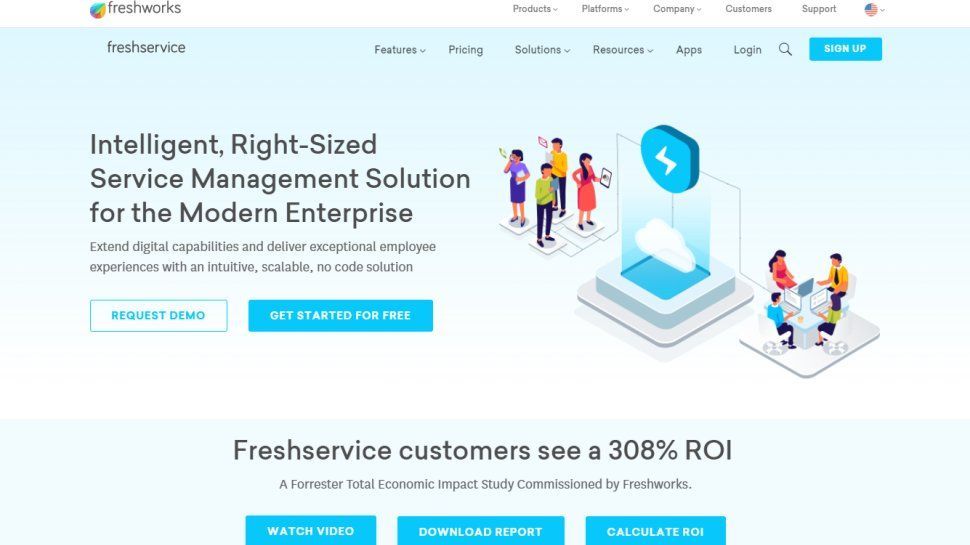
| Pros | Cons |
|---|---|
| Easy to use | Lack of integration with other tools |
| Attractive UI | Row 1 - Cell 1 |
Easy to setup making it a suitable option for SMBs, Freshworks Freshservice helps IT teams with a number of different functions, with IT asset management being one of them. Up to 100 assets can be managed for free, with the next pricing tier extending that number to up to 250. Admins can get a good view of asset information by opening a timeline that show its associated ticket’s historical activity – from priority assignment and status changes to assigned groups – which can also be viewed by employees.
7. Pulseway

| Pros | Cons |
|---|---|
| Great mobile client | More expensive than rival software |
| Robust two-factor security | Row 1 - Cell 1 |
IT asset management is just one component of this multi-talented piece of software, which also offers live chat and infrastructure management as part of the package. It’s a great option for tracking assets on the back of its robust security and support for mobile devices. Pulseway was built as a mobile app first, rather than a desktop app that’s been adapted for mobile use, and it shows. There’s also a desktop client that shows the same information, but the interface isn’t as slick or useful.
Get the ITPro daily newsletter
Sign up today and you will receive a free copy of our Future Focus 2025 report - the leading guidance on AI, cybersecurity and other IT challenges as per 700+ senior executives
Brian has over 30 years publishing experience as a writer and editor across a range of computing, technology, and marketing titles. He has been interviewed multiple times for the BBC and been a speaker at international conferences. His specialty is Software as a Service (SaaS) applications, covering everything from office suites to IT service tools. He is also a science fiction and fantasy author, published as Brian G Turner.
-
 Bigger salaries, more burnout: Is the CISO role in crisis?
Bigger salaries, more burnout: Is the CISO role in crisis?In-depth CISOs are more stressed than ever before – but why is this and what can be done?
By Kate O'Flaherty Published
-
 Cheap cyber crime kits can be bought on the dark web for less than $25
Cheap cyber crime kits can be bought on the dark web for less than $25News Research from NordVPN shows phishing kits are now widely available on the dark web and via messaging apps like Telegram, and are often selling for less than $25.
By Emma Woollacott Published